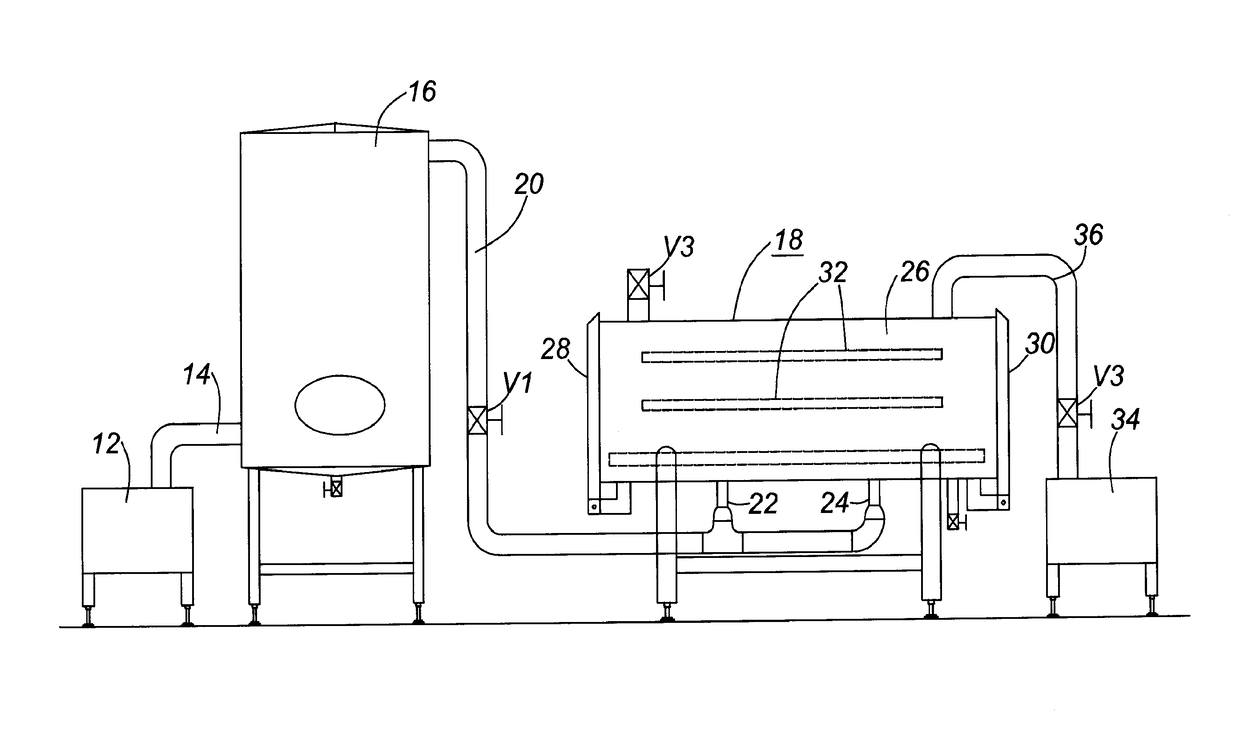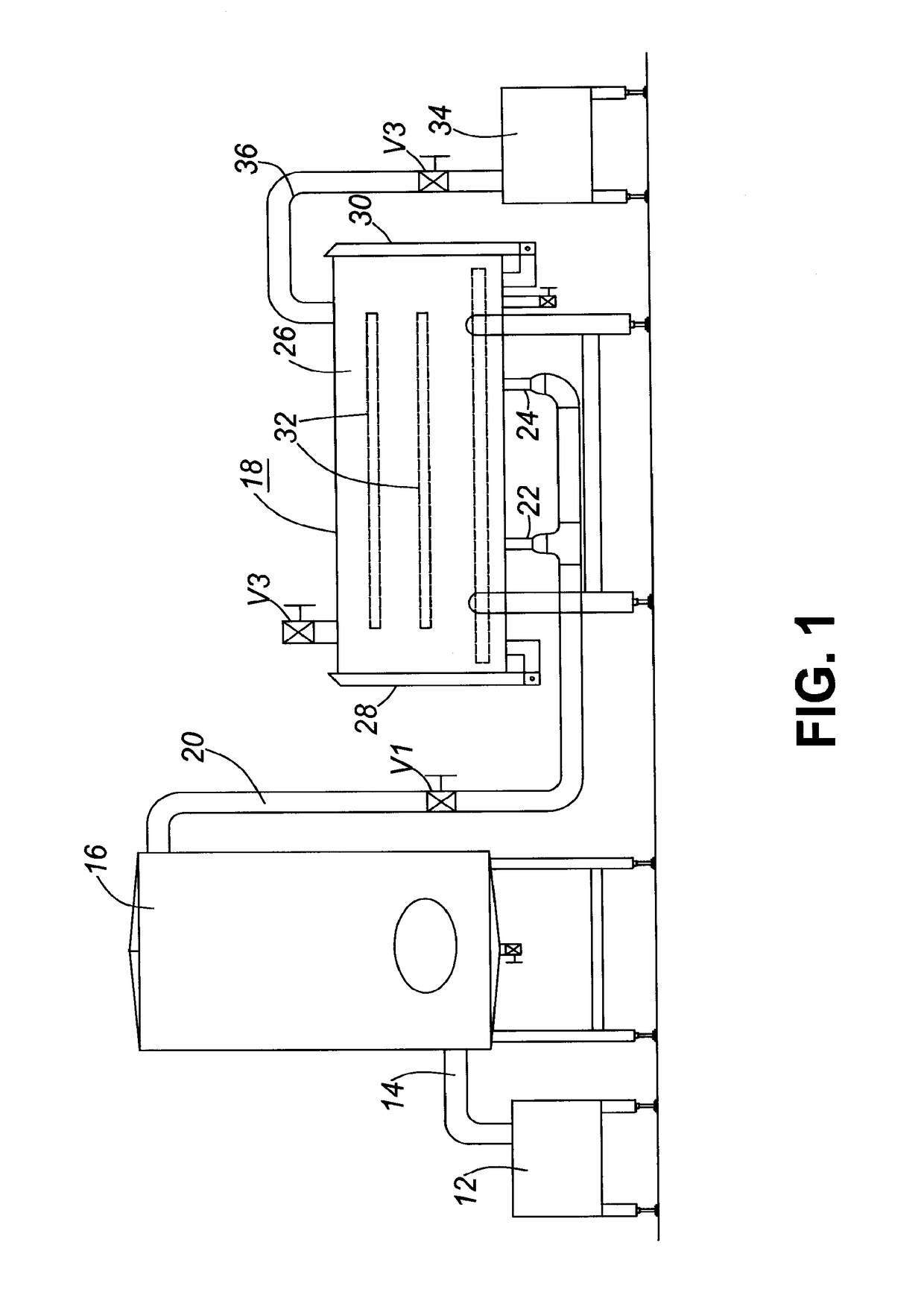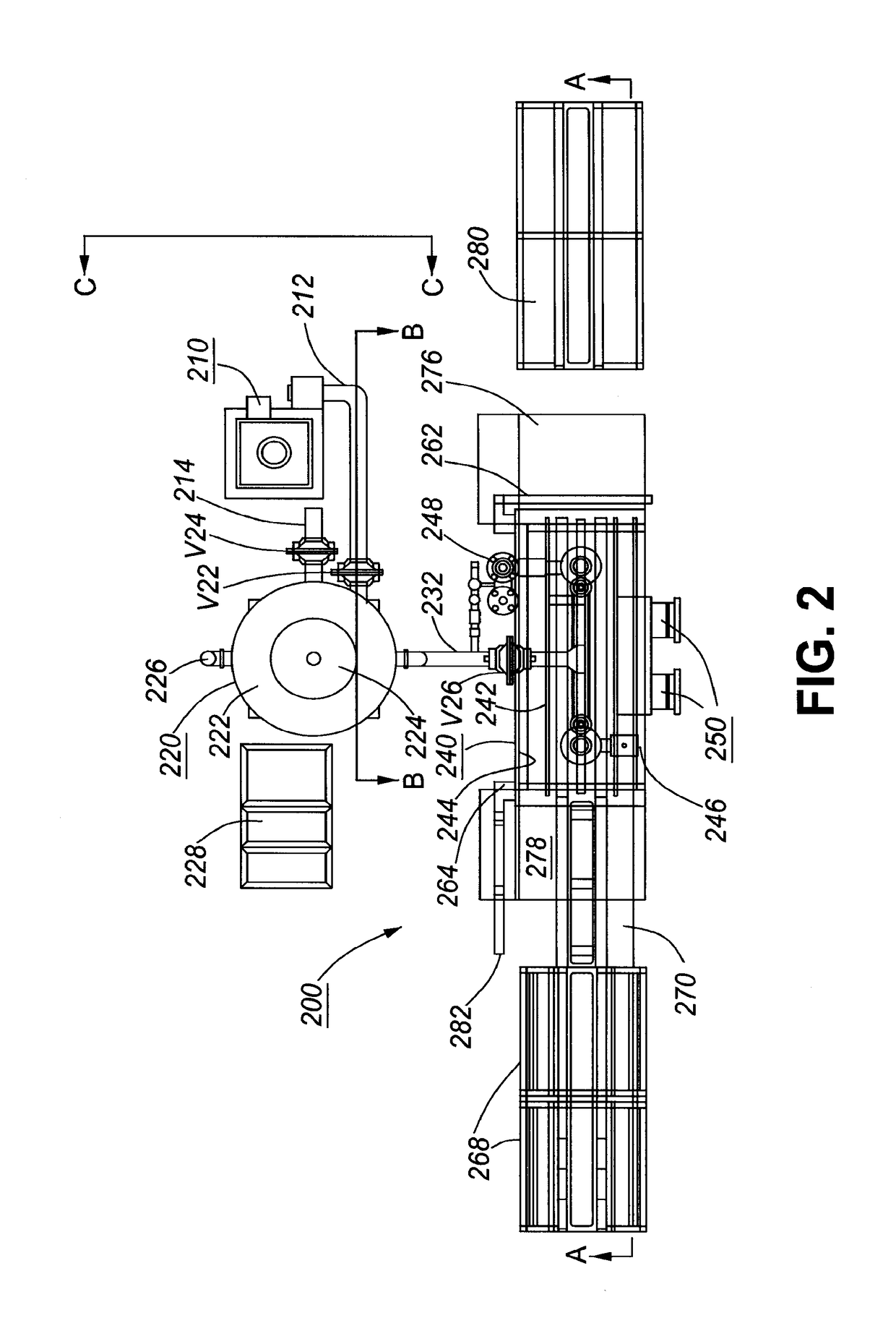Method and apparatus for smoke-infusing proteinaceous foods and smoked-infused such proteinaceous food product so-obtained
a proteinaceous food and infused technology, applied in the direction of packaging foodstuffs, packaged goods, plant/algae/fungi/lichens ingredients, etc., can solve the problems of reducing the shelf life of crustaceans, and reducing the total smoking time of cheese, so as to reduce the exposure of fish, prolong the shelf life of substantially all crustaceans, and enhance the robustness of myotomal tissue
- Summary
- Abstract
- Description
- Claims
- Application Information
AI Technical Summary
Benefits of technology
Problems solved by technology
Method used
Image
Examples
example 2
[0130]The method as described for the production of smoke-infused cheddar cheese is modified for the production of smoke-infused Gouda cheese. The procedure is controlled to be carried out as follows: Vacuum: about 20 inches of Hg to about 29 inches of Hg (about 515 mm Hg to about 735 mm Hg) Smoke in: smoke introduction for about 1 to about 10 seconds Vacuum pulse for about 5 to about 30 seconds Vacuum release for about 1 to about 10 seconds Number of cycles: 50 to about 400 cycles Chilled resting cycle: about 1 to about 6 hours at about 1° C. to about 6° C.
[0131]The smoke-infused Gouda cheese which is prepared according to the above-described method steps of the present invention has no substantial smoky aroma, has improved acceptably-mild smoky taste and has improved preservation qualities.
example 3
[0132]The method as described for the production of smoke-infused cheddar cheese is modified for the production of smoke-infused Colby cheese. The procedure is controlled to be carried out as follows: Vacuum: about 20 inches of Hg to about 29 inches of Hg (about 515 mm Hg to about 735 mm Hg). Smoke in: smoke introduction for about 1 to about 10 seconds Vacuum pulse for about 5 to about 30 seconds Vacuum release for about 1 to about 10 seconds Number of cycles: 50 to about 400 cycles Chilled resting cycle: about 1 to about 6 hours at about 1° C. to about 6° C.
[0133]The smoke-infused Colby cheese which is prepared according to the above-described method steps of the present invention, has no substantial smoky aroma, has improved acceptably-mild smoky taste and has improved preservation qualities.
example 4
[0134]The method as described for the production of smoke-infused cheddar cheese, is modified for the production of smoke-infused Gruyere cheese. The procedure is controlled to be carried out as follows: Vacuum: about 20 inches of Hg to about 29 inches of Hg (about 515 mm Hg to about 735 mm Hg) Smoke in: smoke introduction for about 1 to about 10 seconds Vacuum pulse for about 5 to about 30 seconds Vacuum release for about 1 to about 10 seconds Number of cycles: 50 to about 400 cycles Chilled resting cycle: about 1 to about 6 hours at about 1° C. to about 6° C.
[0135]The smoke-infused Gruyere cheese which is prepared according to the above-described method of the present invention, has no substantial smoky aroma, has improved acceptably-mild smoky taste and has improved preservation qualities.
[0136]The method of aspect of this invention may be carried out with equally-effective results on at least all the cheeses specifically-listed hereinabove.
PUM
 Login to View More
Login to View More Abstract
Description
Claims
Application Information
 Login to View More
Login to View More - R&D
- Intellectual Property
- Life Sciences
- Materials
- Tech Scout
- Unparalleled Data Quality
- Higher Quality Content
- 60% Fewer Hallucinations
Browse by: Latest US Patents, China's latest patents, Technical Efficacy Thesaurus, Application Domain, Technology Topic, Popular Technical Reports.
© 2025 PatSnap. All rights reserved.Legal|Privacy policy|Modern Slavery Act Transparency Statement|Sitemap|About US| Contact US: help@patsnap.com



